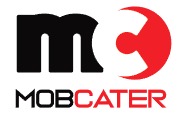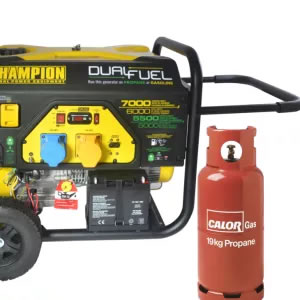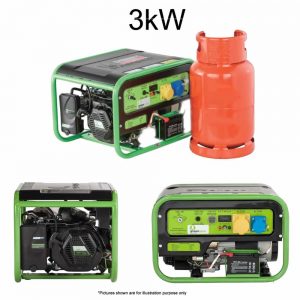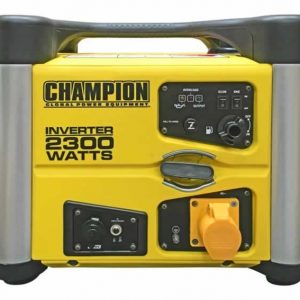MobCater Generator Sizing

Identify Your Power Needs
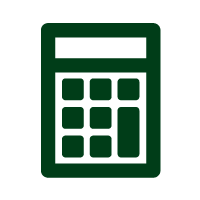
Calculate Total Watts

Find the Perfect Generator
When selecting a generator there are several important features to consider:
Wattage / Engine / Run Time / Starting / Mobility
The size of the generator you need depends on your power requirements. Generally a higher wattage generator lets you power more items at once. This generator sizing sheet will help you to determine your running and starting watts so you can choose the correct generator for your needs.

Find all of the appliances you want to power with your Greengear LPG / Propane generator.
| Appliance | Running (Rated) Watts | Additional Starting Watts |
|---|---|---|
| General Appliances | ||
| Light bulb – 60 Watts | 60 | 0 |
| Light bulb – 70 Watts | 70 | 0 |
| Sump Pump – 1/3 HP | 1140 | 2850 |
| Water well pump – 1/3HP | 575 | 1440 |
| Kitchen | ||
| Refrigerator/Freezer | 700 | 220 |
| Microwave Oven – 625 Watts | 625 | 0 |
| Microwave Oven – 1000 Watts | 1000 | 0 |
| Coffee Maker | 1000 | 0 |
| Electric Stove – 8in. element | 2100 | 0 |
| Dishwasher – Hot Dry | 1500 | 1500 |
| Food Processor | 400 | 0 |
| Toaster Oven | 1200 | 0 |
| Toaster | 850 | 0 |
| Laundry | ||
| Iron | 1200 | 0 |
| Washing Machine | 1150 | 2250 |
| Clothes Dryer – Electric | 5400 | 6750 |
| Clothes Dryer – Gas | 700 | 1800 |
| Appliance | Running (Rated) Watts | Additional Starting Watts |
|---|---|---|
| Heating / Cooling | ||
| Space Heater | 1800 | 0 |
| Humidifier – 13 Gal | 175 | 0 |
| Furnace Fan Blower – 1/2HP | 800 | 2350 |
| Furnace Fan Blower – 1/3HP | 700 | 1400 |
| Window AC – 10,000 BTU | 1200 | 3600 |
| Window AC – 12,000 BTU | 3250 | 9750 |
| Central AC – 10,000 BTU | 1500 | 4500 |
| Central AC – 24,000 BTU | 3800 | 11400 |
| Heat Pump | 4700 | 4500 |
| Family / Play | ||
| VCR | 100 | 0 |
| Stereo | 450 | 0 |
| Colour TV – 27 inch | 500 | 0 |
| Video Game System | 40 | 0 |
| Security System | 500 | 0 |
| Hair Dryer – 1250 Watts | 1250 | 0 |
| Curling Iron | 1500 | 0 |
| Electric Grill | 1650 | 0 |
| AM/FM Radio | 100 | 0 |
| CD/DVD Player | 100 | 0 |
| Mobile Phone Charger | 10 | 0 |
| Appliance | Running (Rated) Watts | Additional Starting Watts |
|---|---|---|
| DIY / Jobsite | ||
| Quartz Halogen Work Light – 300Watts | 300 | 0 |
| Quartz Halogen Work Light – 1000Watts | 1000 | 0 |
| Airless Sprayer – 1/3HP | 600 | 1200 |
| Reciprocating Saw | 960 | 0 |
| Electric Drill – 3/8in. 4 Amps | 440 | 600 |
| Electric Drill – 1/2in. 5.4 Amps | 600 | 900 |
| Belt Sander | 1200 | 2400 |
| Air Compressor – 1/4HP | 975 | 1600 |
| Air Compressor – 1 HP | 1600 | 4500 |
| Hammer Drill | 1600 | 1400 |
| Circular Saw – 7-1/4” | 2100 | 5250 |
| Planer/Jointer – 6” | 1800 | 4500 |
| Appliance | Running (Rated) Watts | Additional Starting Watts |
|---|---|---|
| Office Equipment | ||
| Computer with 17inch Monitor | 800 | 0 |
| Laser Printer | 950 | 0 |
| Fax Machine | 65 | 0 |
| Copy Machine | 1600 | 0 |

Add up all the Running Watts required to operate your appliances. Now find the item with the highest Additional Starting Watts.
Add this number to your total to find the Total Watts needed for your Greengear generator.
| Appliance | Running (Rated) Watts | Additional Starting Watts |
|---|---|---|
| Example | ||
| Refrigerator | 700 | 220 |
| Television | 500 | 0 |
| 1/2 HP Furnace Fan | 800 | 2350 |
| Lights (6x75Watts) | 450 | 0 |
| TOTAL | 2450 | 2350 |
| 4800 | ||
Click to download a printable PDF calculation sheet.
In this example, you will need a generator that produces at least 2450 Total Running Watts and 4800 Total Starting Watts.

Using the numbers you calculated in Step 2, find the generator that best suits your energy needs.
If you have any additional questions, please view our FAQs below.
How can I determine the running or the starting Watts needed for a tool or appliance if it’s not clearly labelled?
If the running Watts are not on the data plate or in the instructions of the tool or appliance, you can make an estimate using the following equation: VOLTS (V) x AMPS (A) = WATTS (W or kW).
How many Watts does an average sized house require to run basic items?
In a typical 2 bed house, running only essentials items (a few lights, refrigerator, heating system) it can require between 5000 – 7000 Watts.
What is the difference between running Watts and starting Watts?
Running (Rated) Watts – continuous Watts needed to keep the appliance running. Starting Watts – extra Watts needed for a few seconds to start the appliance.
Why is only one additional starting Watt appliance used to calculate the total starting Watts required?
Running Watts are the amount of power required for the tool or appliance to run normally. However the starting Watts are what is needed only during the first few second or the initial start-up of the operation. In most cases, only one item will start or cycle at the same time. Therefore this is the most accurate estimate.

